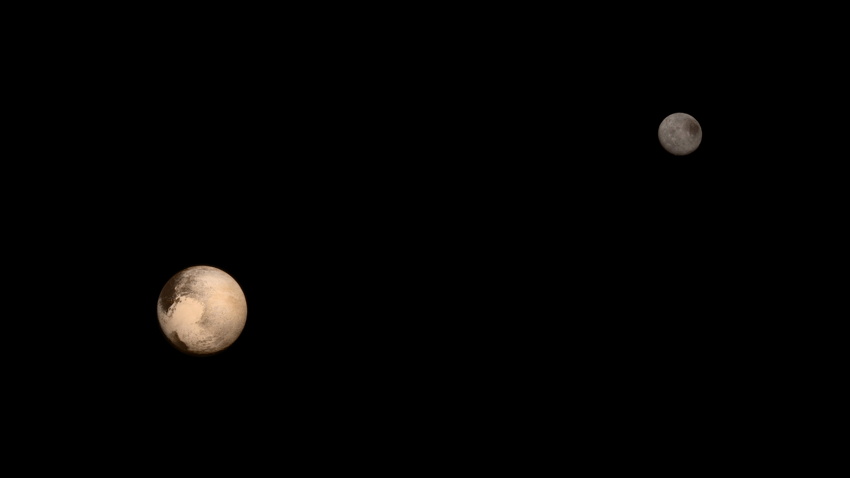Glossary
Pluto

Typically orbiting the sun beyond the orbit of Neptune, Pluto is a dwarf planet and takes 248 years to orbit the sun once. Pluto is about 5.5 times smaller than the Earth and is about 450 times less massive. Pluto was discovered on February 18, 1930 by Clyde Tombaugh. Although it was once classified as a planet, Pluto lost this distinction on August 24, 2006.
In Greek mythology, Pluto is another name for Hades, the king of the underworld. Pluto was the son of Cronus and Rhea.
Planetary Data
| Distance from Sun | Length of Day | Length of Year | Radius | Mass |
| 39.48 AU | 153.3 days | 247.92 years | 1,153 km | 1.3*1022 kg |
Known Satellites
| Name | Distance from Pluto | Rotational Period | Orbital Period | Radius |
| Charon | 17,536 km | -unknown- | 6.38725 days | 603 km |
| Styx | 42,000 km | -unknown- | 20.2 days | 5-12 km |
| Nix | 48,708 km | -unknown- | 24.856 days | 23-68 km |
| Kerberos | 59,000 km | -unknown- | 32.1 days | 6-17 km |
| Hydra | 64,749 km | -unknown- | 38.206 days | 30-84 km |
Planetary and Satellite Data: NASA's Solar System Explorer
Citation and linking information
For questions about this page, please contact Education Web Administrator.
